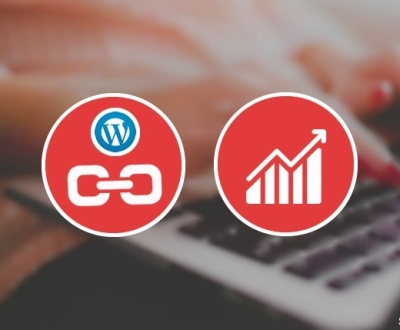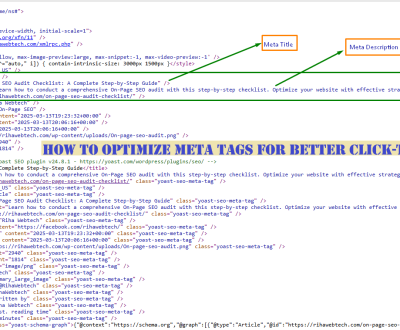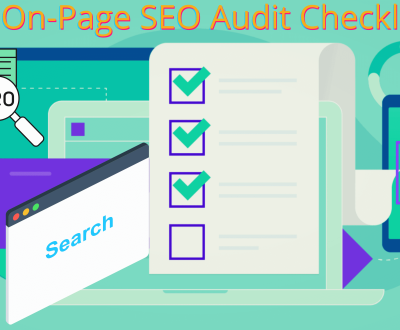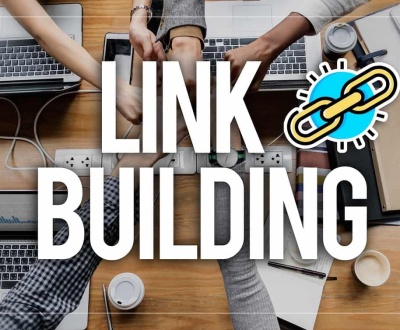Namecheap Denies Access: Solving 403 Forbidden Error
403 forbidden access to this resource on the server is denied namecheap indicates that you don’t have permission to access the website. This error message appears when the server refuses to fulfill your request, usually due to insufficient permissions.
To resolve this issue, you need to identify the root cause, which could be anything from an incorrect url to an expired or revoked ssl certificate. It’s essential to handle the error carefully to avoid any data loss or security breaches.
In this article, we’ll explore the possible reasons behind the 403 error and provide some actionable solutions to get your website back up and running. So, let’s dive in and learn more about this error and how to fix it.

Credit: hostingpill.com
What Is The 403 Forbidden Error?
The internet has made information more readily available and accessible, but sometimes access is denied, even if you have the correct url. One such error is the 403 forbidden error, which occurs when you attempt to access a website or resource but are denied access.
This error can be frustrating, but there are reasons why it happens and ways to deal with it.
Definition And Explanation Of The Error Code
The 403 forbidden error is an http status code that appears when the server refuses to allow access to the requested resource. This error message can be displayed on any operating system and browser. It occurs when the server receives a request from the client, but the server has decided to deny it.
This error message indicates that the client does not have the necessary permission to access the requested resource.
Causes Of The Error
Many factors can cause the 403 forbidden error. Some of the primary reasons include:
- Insufficient permission: The server administrator may not have given the client the necessary permission to access the requested resource.
- Invalid authentication: The server may be unable to validate the client’s credentials, thus denying access to the requested resource.
- File or directory protection: The server may deny access to a file or directory if it is protected or blocked by a firewall, antivirus, or any other security software.
- Ip blocking: The server may deny access to a particular ip address or range of addresses to safeguard against potential threats or unauthorized access.
How To Identify The 403 Error
Identifying the 403 forbidden error is relatively straightforward. Here’s how to do it:
- Check the url: Make sure you’re accessing the correct url and that there are no spelling errors.
- Refresh the page: Sometimes the error appears due to temporary connectivity issues, and refreshing the page may help resolve the error.
- Check permissions: Contact the server administrator to request permission to access the resource if you don’t have the necessary permission.
- Check authentication: Check if you are using valid credentials to log in. If not, correct the error and try again.
The 403 forbidden error can be quite frustrating for website visitors. But by understanding the reasons behind the error and how to fix it, you can overcome these issues. Remember to verify the url, refresh the page, check your credentials, or contact your server administrator for assistance.
Why Is The 403 Forbidden Error Appearing On Namecheap?
Explanation Of How Namecheap Operates
Namecheap is a domain registrar that operates by providing domain registration services to individuals and businesses.
With namecheap, users can register and manage domain names as well as transfer domains from other registrars. Namecheap also offers web hosting, website builder, and many other services to its users.
In addition, namecheap provides excellent customer support, security options, and ssl certificates at an affordable price.
Possible Reasons For The 403 Error On Namecheap
The 403 forbidden error on namecheap can occur due to various reasons. Some of the possible reasons are:
- Insufficient permissions to access the requested resource or page.
- Access to the requested resource or page is restricted by the server or an access control list.
- The requested resource or page does not exist or has been removed.
- Invalid or incorrect authentication credentials for accessing the resource or page.
- Server or network connectivity issues.
Troubleshooting Tips For Identifying The Cause Of The Error On Namecheap
If you encounter a 403 forbidden error on namecheap, here are some troubleshooting tips to identify the cause of the error:
- Ensure that you have entered the correct url or web address.
- Check the spelling of the requested resource or page and verify that it exists.
- Verify that your authentication credentials, such as username and password, are correct.
- Clear your browser cache, cookies, and history and retry accessing the resource or page.
- Try accessing the resource or page from a different browser or device.
- Contact namecheap’s customer support for assistance in resolving the error.
- Check for any issues with your server or network, such as connectivity issues or network outages.
By following these troubleshooting tips, you should be able to identify and resolve the 403 forbidden error on namecheap quickly. Remember to contact customer support for assistance if needed, as they are always willing to help.
Basic Solutions
Getting a 403 forbidden error can be frustrating. Fortunately, there are some basic solutions you can try to resolve this issue. Here are three simple steps you can take:
Checking For Typos In The Url
Since a 403 forbidden error typically indicates a problem with the server, it is easy to forget that sometimes small typos can cause the error. Therefore, the first thing you should do is double-check the url. Make sure that you have entered the correct web address.
Check for incorrect capitalizations or spelling mistakes.
Clearing Browser Cache And Cookies
Clearing your browser cache and cookies can help you fix a 403 forbidden error. The cached data can cause conflicts that prevent you from accessing certain resources on the server. Clearing your browser removes this data and can help you access the resource without any problems.
Here is how to clear cookies on chrome:
- In the top-right corner of chrome, click on the three-dot button, and select settings.
- Scroll down to the bottom of the page and click on advanced.
- Click on clear browsing data.
- In the time range, select all time.
- Check the boxes next to cookies and other site data, and cached images and files.
- Finally, click on clear data.
Logging Out And Logging Back In
Sometimes, logging out and logging back into the website can help you solve the issue. This can reset your session and resolve the 403 forbidden error. Here are the steps you need to follow to log out of a website:
- Look for the “log out” button on the website and click it.
- Next, wait a few seconds and then log back into the website using your credentials.
If you experience a 403 forbidden error, try these basic solutions before contacting support. By checking the url for typos, clearing cache and cookies, and logging out and logging back into the website, you may be able to fix the issue yourself.
Intermediate Solutions
403 Forbidden Access To This Resource On The Server Is Denied Namecheap: Intermediate Solutions
If you encounter a 403 forbidden error on your website, you may have limited access to your resources. This can be frustrating because you won’t be able to view the information you need or work on your website. However, there are ways to solve this issue using intermediate solutions.
This article will discuss some of the most effective solutions that you can use in case of emergency.
Checking Website Permissions
Before trying various solutions, it’s best to check your website permissions. Simply access your website, right-click on the main directory, and select “file permissions” option. You should see a list of permission codes. Ensure that the code for public access is 755 or 644, and the owner has full permission.
If the code isn’t as it should be, then modify your website permissions.
Modifying The .Htaccess File
There is an underlying configuration file called. htaccess that manages the server’s communication with your website. Modifying this file is an efficient solution that can help you solve the 403 error. You can locate the file in the root directory of your website through file transfer protocol (ftp) in your web hosting account.
After that, copy the file to your pc in case a problem arises.
Once you have a backup file, access the. htaccess document with a text editor and modify it accordingly. You can use the following code snippet to allow or deny access from specific ip addresses:
order allow,deny
deny from 123.45.6.7
allow from all
This will deny access to 123. 45. 6. 7 and allow access to all the other ip addresses.
Whitelisting An Ip Address
Whitelisting an ip address is an alternative solution that you can also try. This allows users with the specified ip address to access your website. It prevents other users from accessing your website for privacy and security reasons. You can whitelist an ip through the cpanel hosting control panel.
To whitelist an ip address:
- Login to cpanel
- Navigate to the “security” section and find “ip blocker”
- Click the “add ip” button
- Add the desired ip address you want to whitelist
- Save your changes
After completing these steps, the ip address you whitelist will have access to your website.
In short, intermediate solutions for 403 forbidden errors are checking website permissions, modifying the. htaccess file, and whitelisting an ip address. Follow the guidelines carefully to ensure a successful fix and always remember to create a backup file before modifying files.
Advanced Solutions
403 forbidden access to this resource on the server is denied namecheap error can be quite frustrating. If you’ve already tried basic fixes and are still having difficulties connecting, here are some more advanced solutions to consider.
Troubleshooting With Namecheap Support
One of the most reliable ways to troubleshoot the 403 forbidden error is by contacting namecheap support. The support team is available 24/7 and they can help you identify and fix the issue swiftly. Here are some basic steps to follow:
- Contact the namecheap support team via live chat or ticketing system.
- Provide them with the details of the error and any other relevant information.
- Wait for the team to analyze and diagnose the issue.
- Lastly, follow their instructions to fix the issue.
Investigating Server Errors
Sometimes, the cause of 403 forbidden error is due to a server-related error. In this case, you need to investigate and fix the server-side errors promptly. Here are some tips on how to investigate server errors:
- Check the server logs to see if any errors or warnings are listed.
- Analyze the error codes and messages to determine the root cause of the error.
- Identify the source of the problem and see if you can fix it.
- If you’re unable to resolve the server issue, contact your hosting provider for assistance.
Adjusting Folder Permissions
If you still can’t connect to the server and are receiving the namecheap 403 error, then it’s time to check the folder permissions. You might need to adjust the folder permissions to fix the issue. Here’s how to do it:
- Log in to your hosting account.
- Locate the file manager and navigate to the directory where your website files are stored.
- Right-click on the directory and select “file permissions”.
- Update the permissions to 755 which stands for ‘read, write, execute’.
- Click ‘save’ and then try to refresh your website again.
Troubleshooting the namecheap 403 forbidden error should be done in a systematic manner. Take it one step at a time to ensure that you’re implementing the correct solution. Remember, if you’re having trouble or aren’t sure what to do, contact your hosting provider for assistance.
Ensuring Proper Website Configuration
If you encounter a 403 forbidden error when trying to access a resource on the server, it means that you have been denied access by the server. This error usually occurs due to improper website configuration. Here are some tips that can help you ensure proper website configuration:
Correct Folder Permissions
Folder permissions play a significant role in deciding who can access a website’s files and data. Ensure that the folder permissions of your website are set correctly. Here are some standard folder permission settings that you should follow:
- Folders should have a permission level of 755 or 775, depending on the server configuration.
- Files should have a permission level of 644 or 664, again depending on the server configuration.
- The public_html folder should not have a permission level higher than 750; otherwise, it can put your website at risk.
Properly Configuring .Htaccess File
The. htaccess file is a significant component of the website. It helps to define the server settings and control how the server handles requests to specific directories or files. Here are some crucial points to consider when configuring the. htaccess file:
- Always create a backup of the file before making any changes.
- Ensure that you do not add any blank spaces or characters to the file. It can cause the server to throw errors.
- Use proper syntax and formatting when writing commands in the .htaccess file.
- Always test the file after making changes to ensure that it’s working correctly.
Other Necessary Settings
Apart from the folder permissions and. htaccess file, there are other settings that you must ensure are correctly configured. Here are some necessary settings:
- Ssl certificates must be installed correctly; otherwise, it can cause 403 forbidden errors.
- Ensure that the website url is mapped correctly to the server ip address.
- Check that the server software is running the latest version and is up to date.
By following these tips, you can ensure proper website configuration and reduce the chances of encountering a 403 forbidden error. Remember to always test your website after making changes to see if the error persists.
Best Practices For Website Owner
Best Practices For Website Owners
As a website owner, it’s essential to maintain the security of your site and ensure its smooth running. Here are some best practices you can follow:
Regularly Updating Plugins And Themes
Keeping your website updated is crucial for its security and functionality. Here’s why updating plugins and themes are important:
- It fixes security vulnerabilities and bugs.
- It improves website performance.
- It adds new features and functionalities.
To ensure that your site stays up to date, you can follow these steps:
- Set a reminder in your calendar for regular updates.
- Schedule updates during off-peak hours.
- Test the updates on a staging site before applying them to your live site.
Regular Backup Of Website Files And Database
It’s vital to have regular backups of your website files and database. You never know when things could go wrong, and having a backup helps you restore your site to its previous state. Here are some key points to remember:
- Backup your site regularly, preferably daily or weekly.
- Store backup files in a secure location offsite.
- Test your backups regularly to ensure they are working correctly.
Avoiding Spam Traffic And Malicious Bots
Spam traffic and malicious bots can harm your site’s reputation and negatively impact your search engine ranking. Here are some tips to help you avoid them:
- Use a web application firewall (waf) to block bots and spam traffic.
- Monitor your site’s traffic regularly to detect any anomalies.
- Use tools like google analytics to filter out spam traffic.
Following these best practices will ensure your website remains secure, functional, and user-friendly. So, make sure to implement them and have a thriving website!
Frequently Asked Questions Of 403 Forbidden Access To This Resource On The Server Is Denied Namecheap
What Causes A 403 Forbidden Error On Namecheap?
The “403 forbidden” error on namecheap occurs when the server denies access to a resource.
How Can I Fix A 403 Forbidden Error On Namecheap?
Check file or directory permissions, clear cache, or contact support for further assistance.
Why Am I Seeing A 403 Forbidden Error On Namecheap?
Issues with file/directory permissions, outdated browsers, or server configuration can trigger this error.
Can I Access The Denied Resource On Namecheap Another Way?
If you cannot access the resource through the current way, contact namecheap support for alternatives.
How Long Does It Take For Namecheap Support To Solve 403 Errors?
Namecheap support can take up to 24 hours or more to resolve 403 forbidden errors, depending on the severity of the issue.
Conclusion
Ultimately, receiving a 403 forbidden error on your namecheap server can be a frustrating experience. However, it is essential to remember that this message is indicative of solid security measures employed by the website host. By restricting unauthorized access to your site’s resources and files, namecheap helps ensure the safety and integrity of your website data and information.
If you face this error, it is essential to assess the situation first, then contact the customer service department or it team to initiate the proper troubleshooting steps. Organizations like namecheap take site security seriously and make every effort to provide vast online resources and support to help you manage and resolve any issues.
By following the recommended steps, you can rectify the error quickly and get your website up and running smoothly. So, stay vigilant, keep your site updated, and trust your host to keep your website data safe and secure.
About us and this blog
We are a digital marketing company with a focus on helping our customers achieve great results across several key areas.
Request a free quote
We offer professional SEO services that help websites increase their organic search score drastically in order to compete for the highest rankings even when it comes to highly competitive keywords.
Subscribe to our newsletter!
More from our blog
See all postsWarning: Trying to access array offset on value of type bool in /home/rihawebtech/public_html/wp-content/plugins/live-composer-page-builder/modules/posts/module.php on line 3262
Recent Posts
- How to Add an Internal Link in WordPress April 11, 2025
- How to Optimize Meta Tags for Better Click-Through Rates (CTR): A Comprehensive Guide April 11, 2025
- On-Page SEO Audit Checklist: A Complete Step-by-Step Guide March 13, 2025







